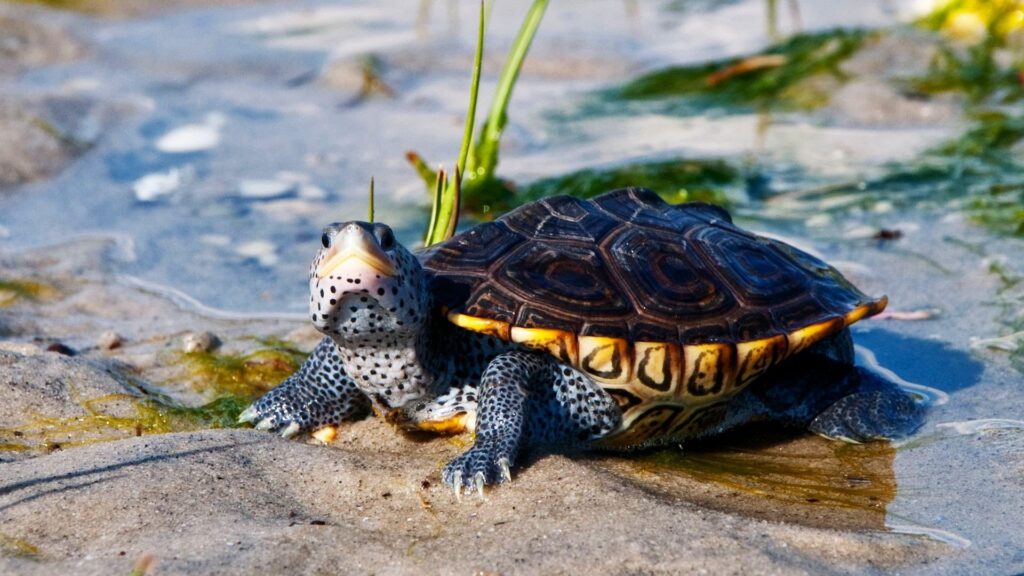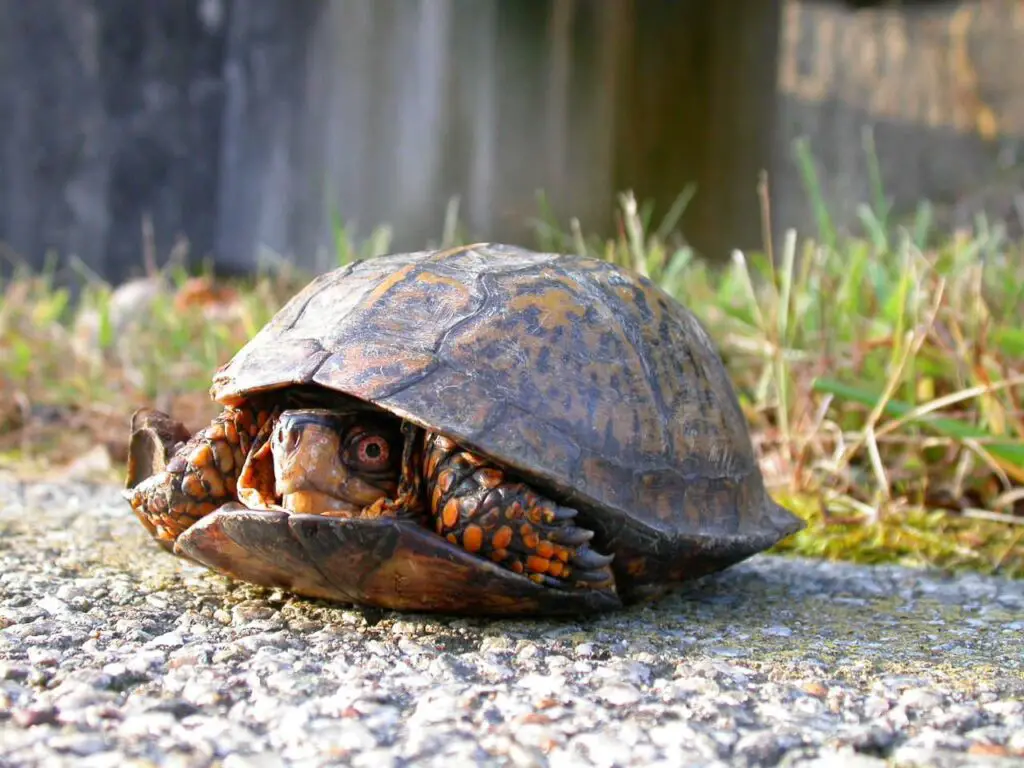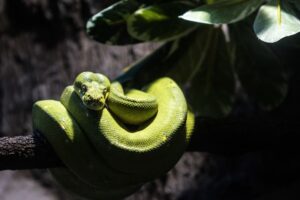Table of Contents
ToggleIntroduction
West Virginia, nestled among the stunning Appalachian vistas, reveals a hidden world that often escapes the casual observer’s gaze—turtles’ rich and fascinating domain. Turtles Of West Virginia? These ancient reptiles, distinguished by their unique shells and slow, methodical motions, contribute significantly to the biological balance of the state’s many ecosystems. West Virginia is home to a stunning assortment of turtle species, from the banks of pure rivers to the forested hillsides, each contributing to the region’s unique tapestry of biodiversity.
The fascination with West Virginia’s turtles stems from their stunning appearance and the important responsibilities they perform in their distinct environments. Turtles, as ectothermic species, are inextricably linked to their surroundings’ temperature and climate, making them sensitive markers of environmental health.
Native Turtle Species
Eastern Box Turtle
Description and Habitat Preferences: The Eastern Box Turtle, Terrapene Carolina Carolina, is an iconic terrestrial inhabitant of West Virginia’s woodlands. Recognized by their high-domed carapace and vibrant colors, these turtles prefer deciduous forests and moist, grassy habitats. They are skilled navigators of the forest floor, utilizing their keen sense of smell to locate food and mates.
Unique Shell Patterns and Colors: The intricate shell patterns and a kaleidoscope of colors adorning its carapace distinguish the Eastern Box Turtle. Each individual boasts a distinct design, ranging from bold patterns to subtle orange, yellow, and brown hues. This unique shell serves as a protective armor and a canvas that tells the story of each turtle’s individuality.
Conservation Status and Threats: Despite their resiliency, Eastern Box Turtles encounter substantial obstacles when it comes to conservation. Fragmentation of their habitats due to urbanization and road mortality poses immediate threats. The International Union for Conservation of Nature (IUCN) lists them as a species of “Least Concern,” but localized declines emphasize the need for vigilance in safeguarding their habitats.
Common Snapping Turtle

Distinctive Features and Behavior: The Common Snapping Turtle (Chelydra serpentina) stands out with its powerful jaws and robust build. Recognized for their prehistoric appearance, these turtles exhibit a distinctive hooked beak and a long tail. Known for their aggressive temperament, they are primarily aquatic but venture onto land for basking and nesting.
Aquatic Habitats and Distribution: Common snapping turtles are distributed across West Virginia, thriving in various marine habitats, including ponds, lakes, and slow-moving streams. Their adaptability allows them to inhabit permanent water bodies and seasonal wetlands, contributing to their widespread presence.
Importance in Local Ecosystems: Common Snapping Turtles play a crucial role in local ecosystems by regulating aquatic populations. As opportunistic omnivores, they consume a diverse diet, including fish, amphibians, and aquatic plants, contributing to the ecological balance of their habitats.
Painted Turtle
Characteristics and Habitat Preferences: The Painted Turtle (Chrysemys picta) captivates with its distinctive red and yellow markings, creating a striking contrast against its dark carapace. These semi-aquatic turtles favor freshwater habitats such as ponds, lakes, and slow-moving rivers, showcasing adaptability in aquatic and terrestrial environments.
Role in Aquatic Ecosystems: Painted Turtles are integral to West Virginia’s aquatic ecosystems. Their foraging behavior helps control insect populations, and their presence contributes to nutrient cycling through their consumption of aquatic vegetation. Their basking habits also make them important indicators of environmental health.
Conservation Efforts: Recognizing the vulnerability of Painted Turtles, ongoing conservation efforts focus on preserving their habitats and raising awareness about the impacts of habitat destruction and pollution. Conservation initiatives aim to safeguard the interconnected ecosystems that support these vibrant turtles, ensuring their continued presence in West Virginia’s waterways.
Endangered And Threatened Species
Spotted Turtle
Rarity and Distribution: The Spotted Turtle (Clemmys guttata) stands out for its distinctive black carapace adorned with bright yellow spots, making it a visually striking but rare species in West Virginia. This small, semi-aquatic turtle has a limited distribution and is typically found in isolated pockets of wetlands, marshes, and shallow water bodies.
Habitat Requirements and Threats: Spotted Turtles depend highly on specific habitat conditions, favoring shallow, slow-moving waters with ample vegetation. Unfortunately, habitat loss due to agriculture, urbanization, and wetland degradation severely threatens their survival. Climate change further exacerbates these challenges, altering the hydrology of their habitats.
Conservation Initiatives: Recognizing the precarious status of Spotted Turtles, conservation initiatives focus on habitat restoration and protection. Efforts to mitigate habitat fragmentation and enhance connectivity between isolated populations are underway. Additionally, public awareness campaigns educate communities about the importance of preserving the wetlands that serve as critical refuges for these captivating turtles.
Eastern Hellbender
Aquatic Habitat and Adaptations: The Eastern Hellbender (Cryptobranchus alleganiensis alleganiensis) epitomizes the unique adaptations of West Virginia’s marine ecosystems. With its flattened body and loose, wrinkled skin, the Hellbender works well with its life in fast-flowing streams. These nocturnal predators primarily feed on crayfish and aquatic invertebrates. Playing a crucial role in maintaining the ecological balance of their habitats.
Conservation Status and Challenges: Eastern Hellbenders face significant challenges despite their resilient adaptations. Declines in their populations are given credit for habitat degradation, water pollution, and the introduction of invasive species. The International Union for Conservation of Nature (IUCN) lists them as near-threatened. Emphasizing the urgency of addressing the factors contributing to their decline.
Collaborative Conservation Efforts: The conservation of Eastern Hellbenders necessitates collaborative efforts across various stakeholders. Researchers, conservation organizations, and governmental bodies collaborate to monitor populations, study their behavior, and implement habitat restoration projects. These initiatives aim to address the root causes of decline, emphasizing the importance of preserving the pristine streams that serve as the lifeblood of Hellbender’s existence.
Habitat And Distribution
Varied Ecosystems Supporting Turtle Populations: West Virginia’s diverse topography fosters a rich array of ecosystems. Providing habitats for both terrestrial and aquatic turtle species. From the wooded uplands of the Appalachian Plateau to the meandering rivers of the Ohio River Valley. The state’s varied landscapes offer a mosaic of environments that support different turtle species. Contributing to the region’s overall biodiversity.
The Importance of Wetlands, Rivers, and Forests: Wetlands, rivers, and forests emerge as crucial habitats for West Virginia’s turtles. Wetlands serve as breeding grounds for aquatic turtles, providing shelter and abundant food sources. Rivers and streams support both marine and semi-aquatic species with their clean, flowing waters. Forests, meanwhile, offer shelter, foraging grounds, and nesting sites for terrestrial turtles, illustrating the interconnectedness of these habitats.
Conservation of Critical Habitats for West Virginia Turtles: Conservation efforts must prioritize protecting and restoring critical habitats. Preserving wetlands from drainage and degradation, maintaining water quality in rivers and streams, and ensuring the health of forested areas are paramount. Collaborative initiatives that engage communities, researchers, and policymakers can contribute to the sustainable management of these habitats. Ensuring a future where West Virginia’s turtles continue to thrive amidst the diverse ecosystems that define the Mountain State.
Conclusion
With its domed shell and methodical terrestrial movements, the Eastern Box Turtle represents the terrestrial resilience inherent in West Virginia’s ecosystems. Its function as a seed disperser and bug consumer exemplifies the deep linkages that bind these reptiles to the very fabric of their surroundings. Preserving the environments that support these critters is important for their survival and the ecological equilibrium of West Virginia’s woodlands.
The Eastern Painted Turtle and the endangered Eastern Hellbender highlight the critical need for clean, unpolluted streams. These species rely on West Virginia’s sinuous rivers and pure streams for survival, highlighting the linked nature of the state’s aquatic ecosystems.







